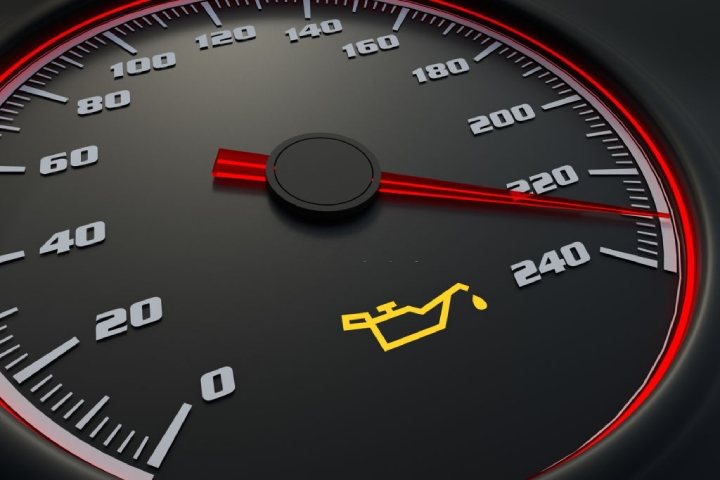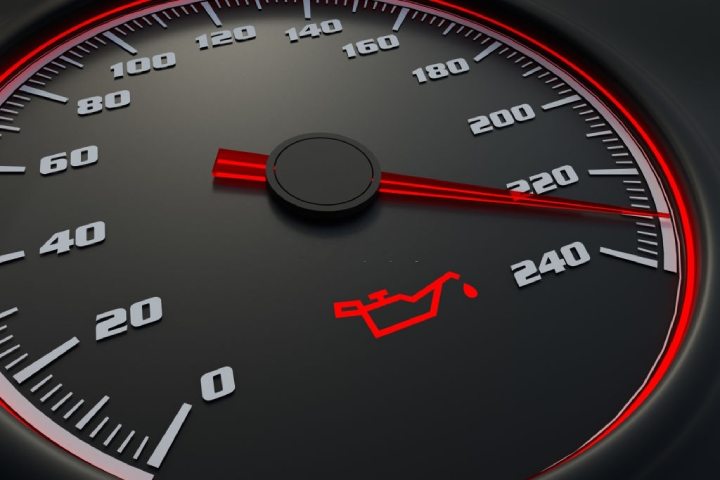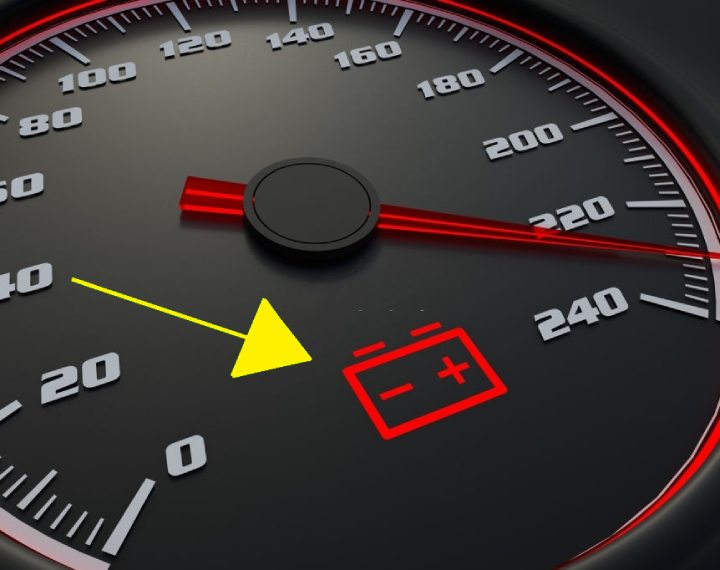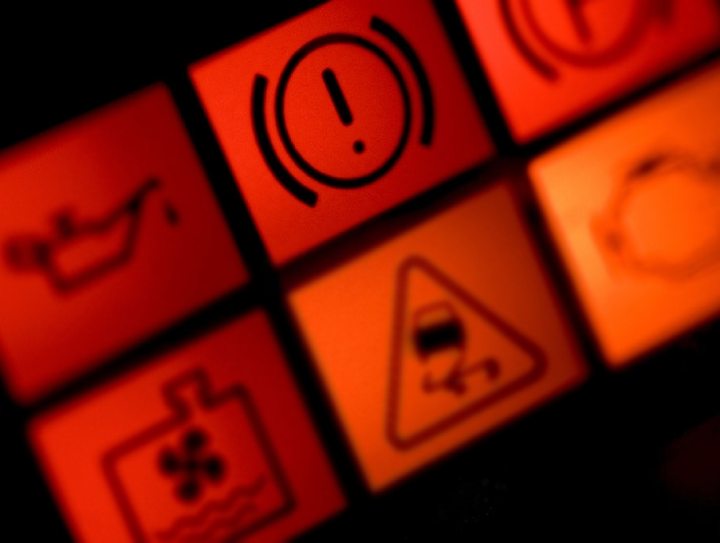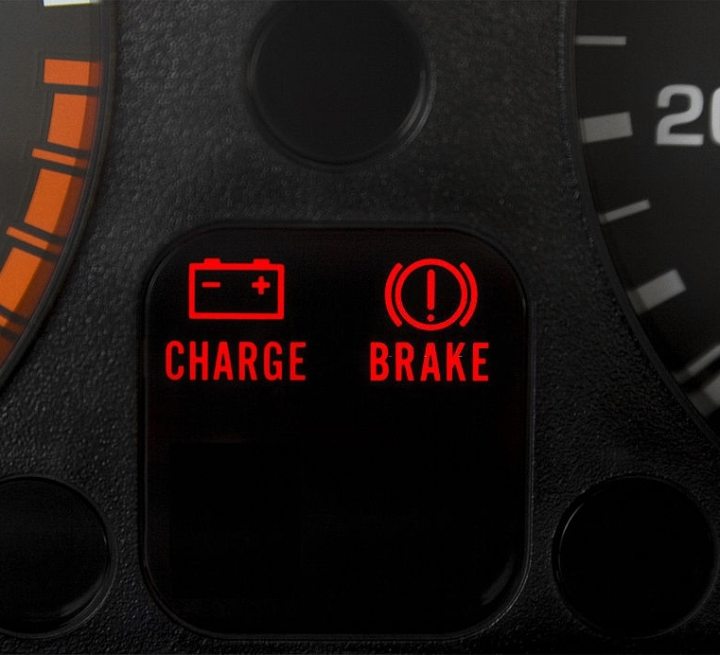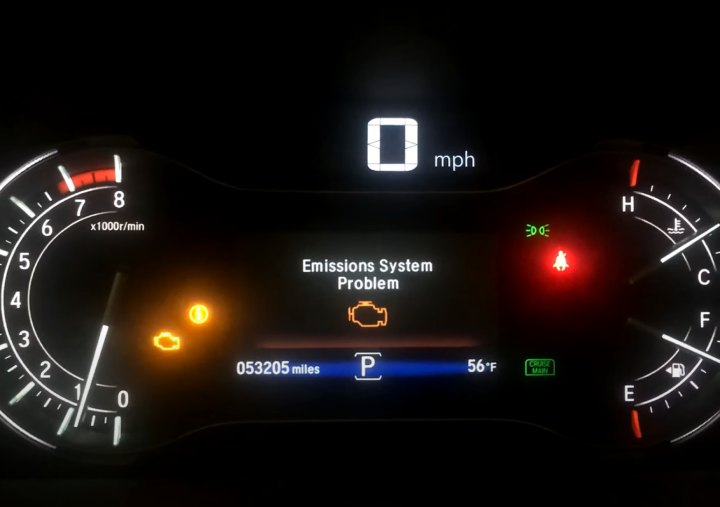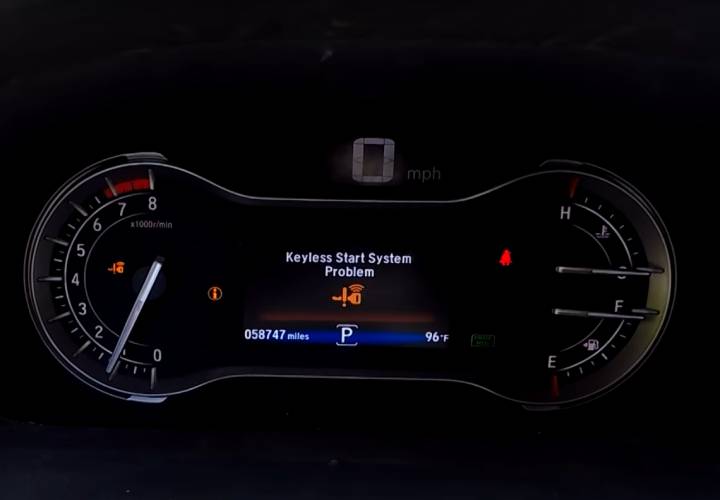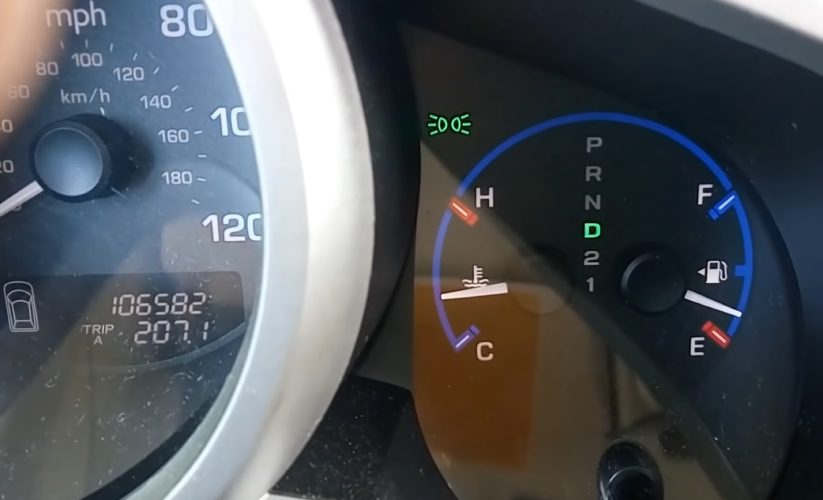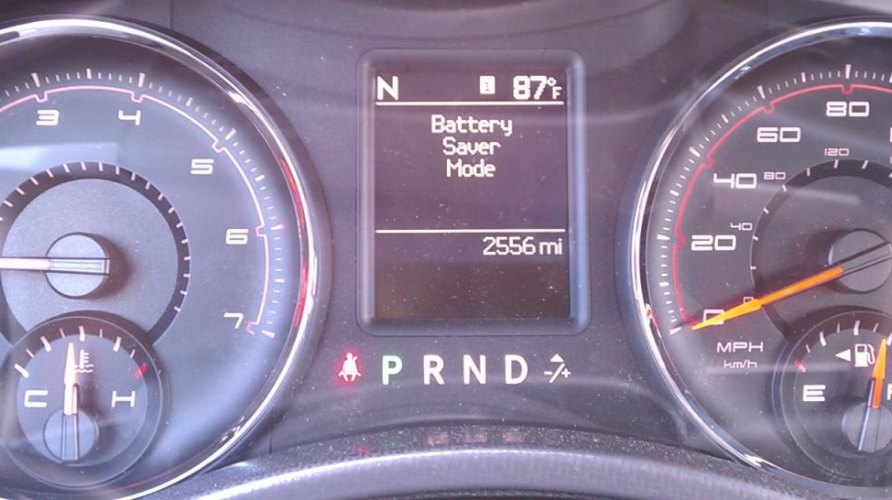A sputtering engine paired with an illuminated check engine light can create frustration for every driver. Drawing from years of experience repairing vehicles, I often receive questions about these related issues. So, what do they indicate? Let’s break it down!
The check engine light alerts you that your car needs attention. Meanwhile, sputtering signals the engine is not running smoothly.
In this article, I provide an overview of the common causes behind these interconnected problems. I also outline steps to diagnose issues yourself, when to seek professional help, and how to resolve problems.
Common Causes of Engine Sputtering & Check Engine Light
A car sputtering with the check engine light on can be caused by various issues, including problems with the fuel system, ignition system, sensors, or exhaust system. Common causes are a clogged fuel filter, faulty fuel pump, bad spark plugs, or a faulty oxygen sensor.
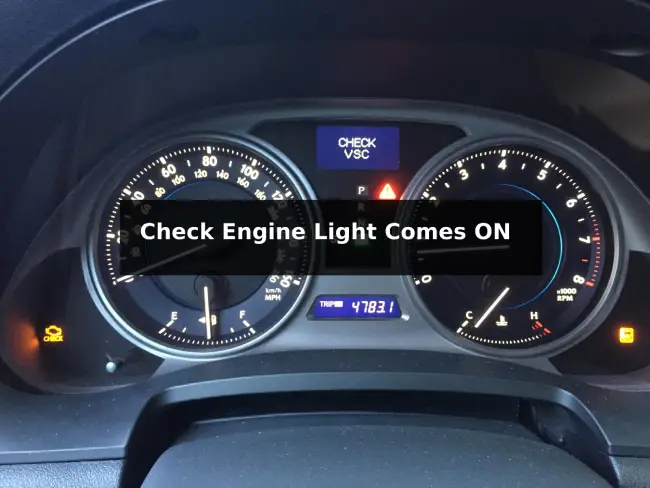
To fix the issue, it’s essential to diagnose the problem and address it promptly to prevent further damage and costly repairs. Some steps to diagnose and fix the issue include scanning for diagnostic trouble codes (DTCs), inspecting the fuel system, checking ignition system components, examining sensors, and inspecting the exhaust system.
If you’re unable to diagnose the problem yourself, consult a professional technician who can accurately troubleshoot and repair the issue
01. Fuel system problems
Several fuel system components can cause sputtering and the check engine light when they fail or become clogged.
Dirty/clogged fuel injectors
- Injectors that don’t open and close properly restrict fuel flow into the engine. This happens as old injectors get caked with fuel residue and carbon deposits.
- The inconsistent fuel spray pattern causes random misfires in the engine cylinders, resulting in noticeable sputtering, especially under load.
- Professional fuel injector cleaning or replacing particularly dirty injectors will often fix the issues. Make sure to inspect injectors for leaks and damage.
- Carbon buildup on intake valves from PCV system faults can also impair injector spray patterns.
Faulty fuel pump
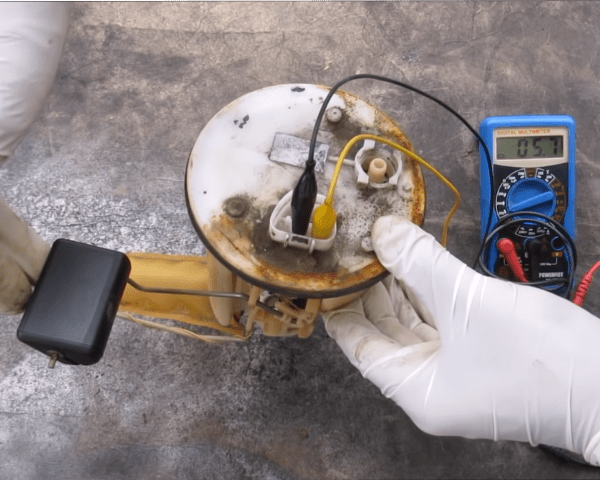
- An aging fuel pump may not generate the 40-60 PSI of consistent pressure needed for proper fuel delivery to the engine.
- These pressure fluctuations cause cylinders to sporadically misfire, producing a sputtering sensation. The truck may also struggle with hard acceleration.
- Replacing the pump will typically restore normal fuel system operation and engine performance. Listen for whining pump noise and check for power or ground issues.
Clogged fuel filter
- Over time contaminants and debris block the filter media so that less fuel is able to reach the engine.
- The restricted, contaminated fuel supply causes random misfires and sputtering, especially when accelerating or maintaining speed.
- Replacing the filter every 15k miles will prevent restricted flow issues. Visually inspect filter if you suspect it is clogged.
The check engine light illuminates because these fuel problems alter the optimal air/fuel ratio, increasing emissions. Fixing any injector, pump or filter issues will resolve both the engine sputtering and the warning light.
02. Ignition System Issues
Problems in the ignition system are often overlooked causes of engine sputtering and the dreaded check engine light. But faulty components like spark plugs and ignition coils can certainly contribute to these frustrating issues.
Failing or fouled spark plugs
- Spark plugs use high voltage sparks to ignite the compressed air/fuel mixture in each engine cylinder
- Over time, plugs can become fouled with carbon deposits or may fail from wear and high heat
- This fouling and wear cause the plugs to fire weakly rather than generating a strong spark
- The weak ignition leads to misfires, poor combustion, and engine sputtering or rough running
- Replacing worn or fouled spark plugs with new ones can often restore proper ignition and smooth engine operation
- Inspect plugs for excessive corrosion, carbon buildup, electrode wear, or damage that may be causing misfires
Faulty ignition coil
- Ignition coils function to step up the 12 volts from the battery to the thousands of volts required to generate the spark plug high tension current
- Coils that are old, cracked, or damaged cannot properly transform the voltage as designed
- This results in the plugs receiving only a weak spark current, leading to ignition misfires
- The misfires cause the engine to sputter and run unevenly, especially under load
- Replacing a failed ignition coil will typically resolve the sputtering issue
- Inspect coils for cracks/damage and ensure electrical connectors are clean and tight
03. Sensor Problems
Onboard sensors are critical for proper engine operation. So when sensors fail, it can lead to sputtering and the check engine light coming on.
Bad mass air flow sensor
- This sensor measures the volume of air entering the engine
- It provides input to the computer to determine the optimal air/fuel ratio
- A contaminated or failed mass air flow sensor gives incorrect readings
- The computer then incorrectly calculates the fuel trim and injects the wrong amount of fuel
- This leads to random misfires, causing the engine to sputter and idle roughly
- Replacing the faulty mass air flow sensor will restore proper performance
- Inspect sensor for dirt buildup or damage and check the connectors
Faulty oxygen sensor
- Oxygen sensors measure residual oxygen content in the exhaust stream
- This allows the computer to monitor combustion efficiency and fine tune fuel trim
- A deteriorated or dead oxygen sensor provides inaccurate data to the computer (see our guide on how to fix a bad oxygen sensor)
- Without correct oxygen feedback, the computer cannot properly adjust fuel delivery
- Lean or rich fuel mixtures develop, resulting in misfires and sputtering
- The oxygen sensor should be replaced to prevent ongoing issues
- Inspect sensor wiring, connector pins, and look for sensor damage
The check engine light is activated because these two sensors provide data critical for engine management.
04. Exhaust System Issues
At first glance, the exhaust system may not seem like an obvious source of engine sputtering and check engine lights. But common components like the catalytic converter and exhaust manifold can contribute to these frustrating issues when they fail or become restricted.
Clogged catalytic converter
- The catalytic converter processes exhaust gasses to reduce emissions
- Over time, the internal catalyst material breaks down and collects carbon deposits
- These deposits restrict exhaust flow out of the engine, causing excessive backpressure
- The engine has to work much harder to expel the trapped exhaust gases
- This extra effort leads to misfires, sputtering, power loss, and rough running
- Replacing a severely clogged converter will restore normal exhaust flow and engine performance
- Listen for noisy converter operation and inspect for external converter damage
Leaking exhaust manifold
- The exhaust manifold channels burned gasses from the engine cylinders to the exhaust
- Cracks, loose bolts, or failed gaskets can cause leaks in the manifold over time
- These leaks allow oxygen to alter the precise air-fuel mixture entering the cylinders
- Too much oxygen causes a lean mixture, too little causes a rich mixture – both cause misfires
- Replacing old manifold gaskets or tightening loose bolts can fix manifold leaks
- Inspect the manifold and gaskets closely for any signs of cracks or looseness
In both cases, the check engine light is activated by the abnormal combustion caused by restricted or leaking exhaust.
Diagnosing A Sputtering Engine With A Check Engine Warning
When an engine sputters and the check engine light glares, it can be tricky to pinpoint the underlying cause. But using a systematic approach helps narrow down the issue. Follow these troubleshooting steps to get to the root of the problems.
Check Diagnostic Trouble Codes
First, connect an OBD2 scanner tool and check for any diagnostic trouble codes (DTCs). The codes indicate issues with specific components or sensors. For example, P0301 signals cylinder 1 misfire and P0171 indicates a lean fuel condition. Review all stored codes, as multiple problems often contribute. The DTCs provide clues to focus your diagnosis efforts.
Inspect the Fuel System
Next, thoroughly inspect the fuel delivery system. Problems like dirty injectors, faulty pump, or clogged filter are very common causes of sputtering. Check for injector leaks and remove them one by one to inspect for clogging. Perform a fuel pressure test to check for adequate pressure. Drop the fuel tank to check pump condition and swap in a new filter. Fixing fuel delivery issues often resolves sputtering.
Evaluate Ignition System
Also evaluate ignition system components like spark plugs, wires, and coils. Remove each plug and check for fouling, improper gap, or electrode wear. Do resistance tests on all wires. Swap coils with known good coils to isolate faults. If ignition parts are faulty, replace them with quality components to restore proper sparks.
Check Exhaust System
Finally, examine the entire exhaust system. Look for manifold leaks allowing oxygen imbalance. Bang on the catalytic converter to check for internal rattling indicating clogging. Inspect oxygen sensor wiring and connectors. Leaks and converter blockages cause misfires.
How to Fix the Sputtering Engine
A sputtering engine accompanied by the check engine light can be caused by a number of issues, but they typically stem from either the ignition system or the fuel delivery system. Replacing worn parts and cleaning or repairing clogged components will often resolve the sputtering.
Here are the steps you should take to troubleshoot and fix the most common causes of a sputtering, misfiring engine when the check engine light comes on:
Replace Fouled Spark Plugs and Worn Ignition Coils
Spark plugs are a vital part of the ignition system, generating the high voltage spark that ignites the air/fuel mixture in the engine’s cylinders. Over time, spark plugs can become fouled due to carbon and oil buildup on the electrodes. This prevents them from firing properly, resulting in a weak or intermittent spark.
Replacing fouled spark plugs with a new set will restore performance. Use the recommended type and gap spacing per the vehicle owner’s manual. Ignition coils can also degrade and fail over time from normal wear and tear. Coils convert the vehicle’s 12V power into the thousands of volts needed to fire the spark plugs.
Weak or failing coils will provide a weak spark that causes engine misfires. For coil-on-plug ignition systems, replace any faulty individual coil. For older distributor systems, replace the entire distributor cap and rotor if any of the coil towers are cracked or damaged.
Clean or Replace Clogged Fuel Injectors
The fuel injectors spray atomized fuel into each cylinder intake port in a finely metered mist. Over time, injectors can become clogged with fuel varnish deposits that restrict flow and atomization.
This results in a lean fuel condition and misfires. Professional fuel injector cleaning services can often restore injector flow and performance. If cleaning fails, replacement of the injector(s) may be required.
Replace a Faulty Fuel Pump or Clogged Fuel Filter
The fuel pump maintains the proper fuel pressure and volume to meet engine demands. A failing pump can cause erratic fuel delivery and pressure fluctuations that lead to sputtering. Listen for buzzing or whining noises from the pump for clues of failure. Replace the pump or fuse if faulty.
The fuel filter screens out contaminants from the fuel supply to prevent clogs in the injectors or pump. A blocked filter chokes off fuel flow to the engine. Replacing the fuel filter every 30,000 miles or per the maintenance schedule restores unrestricted fuel flow.
Swap Out Malfunctioning Sensors
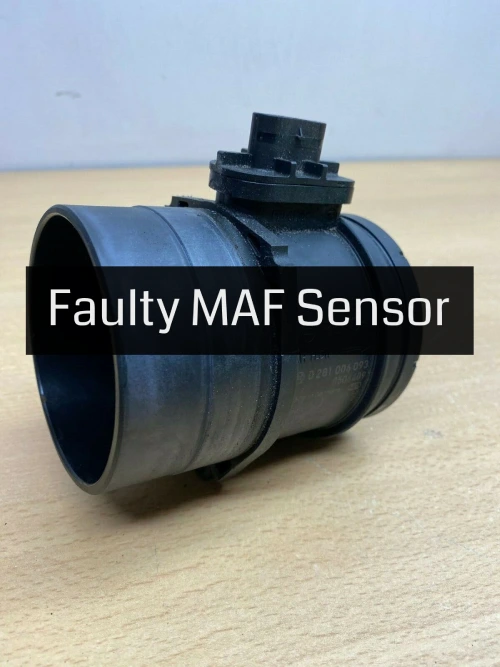
Key sensors provide the engine computer with vital data to control ignition timing and fuel delivery. Faulty sensors like the mass air flow (MAF) sensor and oxygen sensor can provide inaccurate readings that lead to misfires and sputtering. It is worth trying to clean the MAF sensor if you can see any buildup. Replacing the defective sensor restores proper function. Diagnostic trouble codes (DTCs) can help identify bad sensors.
Repair Exhaust Leaks and Clean the Catalytic Converter
Leaks in the exhaust manifold or head gasket allow oxygen to enter the system. This alters the air/fuel ratio entering the engine, which can cause sputtering. Inspect the exhaust components and replace leaking gaskets or cracked manifolds. You can see our guide here on repairing your exhaust.
A restricted catalytic converter impedes exhaust flow, creating excessive backpressure that negatively impacts performance. This commonly results from a clogged converter damaged by leaded fuel, oil burning, or excessive fuel mixture. Replacing the affected converter will restore proper exhaust flow. Alternatively, a professional can sometimes declog a converter through chemical cleaning.
Reset the Check Engine Light
Once all repairs are complete, reset the check engine light by disconnecting the battery for 30 seconds. This will clear all diagnostic trouble codes. Road test the vehicle to verify normal operation. If the check engine light returns, further diagnosis is needed to pinpoint any remaining issues.
When to Seek Professional Help
For complex drivability issues, enlist a professional technician to diagnose the specific cause. They have advanced computer scanners, software, and experience to accurately troubleshoot check engine lights, misfires, and drivability problems. This can save time and money compared to replacing parts through trial and error.
FAQ
Here is a short list of questions related to this issue, which I have been asked during my time working on cars.
Why does my engine sputter when I accelerate or go uphill?
Sputtering on acceleration or uphill is typically due to an issue with fuel delivery, such as a clogged fuel filter, failing fuel pump, or dirty fuel injectors unable to provide enough fuel under increased load.
What should I do if the check engine light is blinking while the car is sputtering?
A blinking check engine light indicates a severe misfire that could damage the engine if you continue driving. You should pull over safely and have the vehicle towed to a repair shop for diagnosis.
How can I tell if the sputtering is caused by a fuel system problem versus an ignition problem?
Fuel system issues will cause sputtering that gets worse with acceleration as more fuel is needed. Ignition problems will cause sputtering that is constant regardless of acceleration.
What are the most common fuel system issues that can lead to sputtering?
Common fuel system culprits are a clogged fuel filter, failing fuel pump, dirty injectors, and problems with the fuel pressure regulator.
What ignition system components commonly cause sputtering when they fail?
Faulty spark plugs, bad plug wires, weak ignition coils, and issues with the distributor or timing can cause ignition-related sputtering.
Will a sputtering engine cause damage if I continue driving it?
Yes, prolonged sputtering can cause engine damage from misfires and raw fuel entering the exhaust. The underlying cause should be diagnosed and fixed promptly.
Is it safe to drive my car if it’s sputtering even though the check engine light is on?
It’s generally not recommended to drive a sputtering vehicle. You should have it towed to a shop for repair.
How soon should I get my sputtering car looked at by a mechanic?
You should have it inspected by a mechanic right away or towed to a shop to diagnose and repair the issue promptly.
What typically needs to be repaired or replaced to fix a sputtering engine with the check engine light on?
Common repairs include replacing spark plugs, fuel pumps, oxygen sensors, fuel injectors cleaning, fuel filters, ignition coils and catalytic converters.
Engineering Coordinator with 5+ years of experience in the automotive manufacturing industry. Currently supporting vehicle development and new model launch activities at Honda Development and Manufacturing of America. Skilled at managing engineering teams, overseeing prototype builds, coordinating testing, and driving continuous process improvements. LinkedIn

